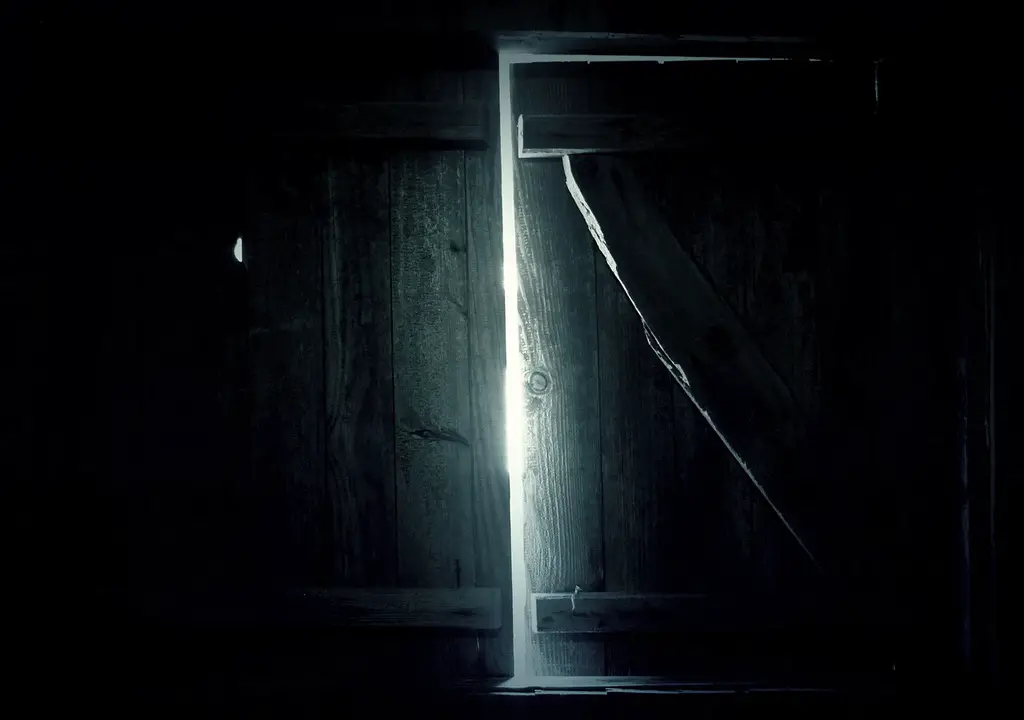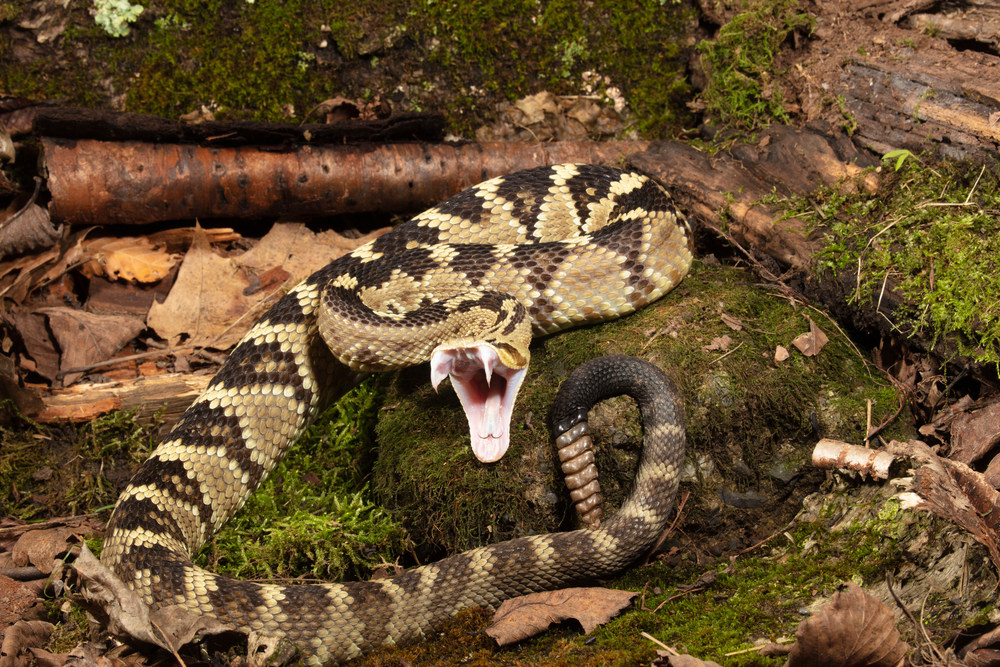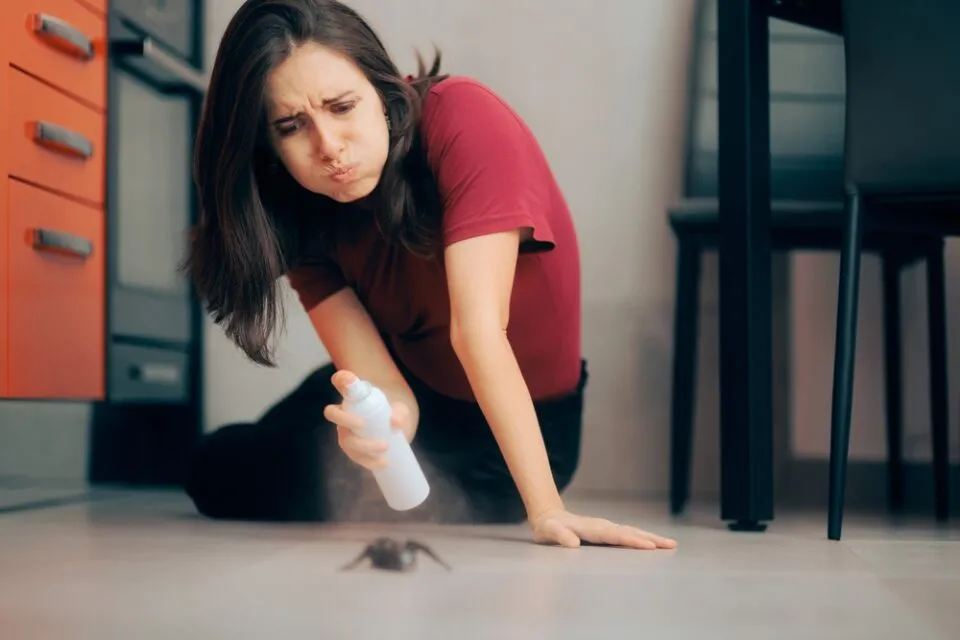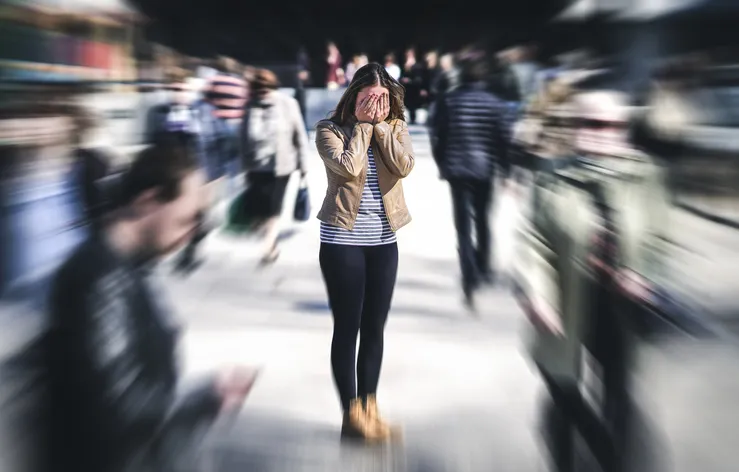Ever wonder why certain things make your heart race or your skin crawl? Humans are wired with some deeply ingrained fears that have been passed down through generations. These primal instincts helped our ancestors survive in a world full of dangers, and even today, they can still trigger a fight-or-flight response. Let’s explore some of these fears and see why they still grip us so tightly.
1. Fear Of The Dark

There’s something about darkness that just feels unsettling, isn’t there? It’s not just about not being able to see; it’s about not knowing what’s lurking in the shadows. Our ancestors faced real threats from predators in the dark, so being afraid of it was a survival mechanism. According to Dr. Martin Antony, a professor of psychology at Ryerson University, this fear is a common trait originating from our evolutionary past, where being cautious in the dark could mean life or death. Even today, many of us feel that twinge of fear when the lights go out, a primal echo of times long past.
The fear of darkness often starts in childhood and, for some, persists into adulthood. It’s not just about monsters under the bed; it’s a fear of the unknown and unseen. In the comfort of daylight, we feel in control, but darkness strips away our certainty. While adults may not fear a boogeyman, the discomfort of darkness can manifest in other ways, like being uneasy in an unlit alley. This fear is a reminder of our vulnerability when our sense of sight is impaired.
2. Fear Of Heights

Standing at the edge of a high place can send chills down your spine. Even if you know you won’t fall, your body might still react with a sense of panic. This fear, known as acrophobia, is thought to be a result of our body’s natural response to potential harm. Our ancestors who were cautious around heights were less likely to suffer fatal falls, so this fear naturally enhanced survival. While skyscrapers and roller coasters weren’t around back then, the instinct to step back from a ledge is still hardwired into us.
Some people experience vertigo or dizziness when looking down from high places, while others might feel pure fear. This reaction is a combination of visual stimuli and the brain’s assessment of danger. It’s quite rational when you think about it—after all, a fall from a great height is likely to result in serious injury or worse. Modern safety measures like guardrails can mitigate these fears, but the instinct remains. Heights symbolize a loss of control, and our brains are quick to remind us of the potential risks.
3. Fear Of Snakes

There’s a reason why the sight of a snake can make your heart stop for a moment. Snakes have been a source of fear for humans throughout history, often featured in myths and stories as dangerous beings. Research conducted by Dr. David Rakison at Carnegie Mellon University suggests that humans are evolutionarily predisposed to detect snakes quickly, as they were frequent threats to early human life. This inborn wariness has helped our species survive by keeping us alert to danger. Even in places where snakes aren’t common, this fear can still manifest, a testament to its deep-seated roots.
Snakes slither in a way that feels inherently unpredictable and unnerving. For some, the mere thought of one can cause a visceral reaction. This fear can range from a slight unease to a full-blown phobia, known as ophidiophobia. While many snakes are harmless, the idea that one might be venomous keeps the fear alive. It’s a reminder that not all fears are irrational—sometimes, they’re there to keep us safe.
4. Fear Of Spiders

Spiders are another creature that can send shivers down your spine. Despite their small size, their eight legs and quick movements can trigger a strong fear response in many people. Arachnophobia, or the fear of spiders, is one of the most common phobias. Like snakes, spiders have been a threat throughout human evolution, with some species being venomous. Even though the majority of spiders are harmless, the fear is often disproportionate to the actual threat.
This fear can often lead to an exaggerated startle response, where even a small spider sighting can result in a big reaction. It’s not just about the potential bite; it’s about the way spiders move and appear suddenly. The fear of spiders is often tied to a feeling of disgust, as their many legs and unique appearance can be unsettling. For those who suffer from arachnophobia, even pictures or videos of spiders can trigger anxiety. This instinctual fear serves as a survival mechanism, keeping us alert to potential dangers.
5. Fear Of Flying

For many, the thought of being in a metal tube hurtling through the sky is enough to spark anxiety. The fear of flying, or aviophobia, often stems from a lack of control and the understanding of the laws of physics. According to a study published by the Journal of Travel Medicine, this fear can also be linked to other phobias, like heights or confined spaces. Despite air travel being one of the safest modes of transportation, the idea of being thousands of feet above ground can be terrifying. It’s a modern fear that taps into our age-old survival instincts.
Flying combines several fears into one experience: heights, enclosed spaces, and vulnerability. When you’re on a plane, you relinquish control to the pilots and technology, which can be unsettling. Turbulence can mimic the sensations of falling, triggering a primal fear response. The lack of control and unfamiliarity with the mechanics of flight can make even a smooth journey stressful. While rationality tells us flying is safe, our instincts might disagree.
6. Fear Of Open Spaces

Agoraphobia, the fear of open spaces, can be debilitating for those who experience it. It’s not just about the space itself, but the fear of being unable to escape or find help. This fear can manifest in crowded or wide-open areas, making everyday activities challenging. For some, it’s the fear of having a panic attack in a public place and not being able to leave. This can lead to avoidance behavior, where individuals might choose to stay in the safety of their homes.
The roots of agoraphobia can often be traced back to a combination of genetic and environmental factors. It’s a complex fear that intertwines with other anxiety disorders, amplifying the sense of vulnerability. While it might seem irrational to those who don’t experience it, the fear is very real for those who do. Treatment often involves therapy and gradual exposure to feared situations, helping individuals regain confidence and control. It’s a challenging fear, but with help, it can be managed.
7. Fear Of Confined Spaces

Claustrophobia, or the fear of confined spaces, can trigger intense anxiety for some. This fear is often linked to a fear of being trapped or suffocated, leading to panic in elevators, small rooms, or crowded spaces. A study by Dr. Steven Taylor, a clinical psychologist, indicates that claustrophobia may stem from an evolutionary need to avoid entrapment, which could have been life-threatening. When you feel like you can’t escape, your body’s natural response is to panic. Even if there’s no real danger, the sensation of being trapped can be overwhelming.
For some, claustrophobia might be sparked by a specific event or trauma. Others might experience it without a clear trigger, finding themselves anxious in seemingly harmless environments. This fear can make everyday tasks, like using public transportation or getting an MRI, seem insurmountable. Treatment often includes techniques to manage anxiety and gradually expose oneself to confined spaces. Understanding that this fear has deep evolutionary roots can help sufferers find ways to cope.
8. Fear Of Germs

The fear of germs, also known as mysophobia, has become more prevalent, especially in recent years. This fear often leads to obsessive cleanliness or avoidance of perceived contaminated surfaces. It’s not just about being clean; it’s a fear of illness, contamination, and the unseen dangers lurking on every touchable surface. For some, this fear can lead to compulsive behaviors, impacting daily life. The increase in information about germs and disease may exacerbate these fears.
Mysophobia can manifest in different ways, from excessive handwashing to avoiding public places. It’s a fear that ties back to our instinct to avoid disease, which historically could decimate populations. In times of global health crises, such as pandemics, this fear can become more pronounced. While awareness of hygiene is beneficial, when it becomes an obsession, it can be debilitating. Understanding and addressing the underlying anxiety is key to managing this fear.
9. Fear Of Thunder And Lightning

The loud crash of thunder and the flash of lightning can be terrifying, especially when you’re caught in a storm. This fear is known as astraphobia, and it’s more common than you might think. Historically, storms were seen as signs of divine wrath or impending doom, embedding a deep-seated fear in our collective psyche. Even today, the unpredictability of storms can trigger anxiety, reminding us of nature’s uncontrollable power. While most storms pass without incident, the fear can be overwhelming for those affected.
Some people experience this fear from a young age, often passed down from parents who also fear storms. Children’s imaginations can run wild, turning storms into monsters in the sky. As adults, while we might understand the science of weather, the fear can still linger. The key lies in recognizing the rational basis for the fear and learning ways to cope with anxiety during storms. For some, taking shelter in a safe space can provide comfort until the storm passes.
10. Fear Of Being Alone

The fear of being alone, also known as autophobia, is more than just wanting company. It’s the fear of isolation and being without support, which can trigger anxiety and panic. Our ancestors relied heavily on their social groups for survival, so being alone could mean vulnerability to dangers. This deep-rooted fear can manifest in modern times as anxiety when left alone or the need for constant communication with others. For some, the silence of solitude can be deafening, amplifying their fears.
Those who experience autophobia often find ways to avoid being alone, even if it means staying in unhealthy relationships. The fear is not just physical loneliness but also emotional isolation—feeling like there’s no one to turn to in times of need. It can lead to a cycle of seeking validation from others and fearing abandonment. Therapy can help individuals understand and manage this fear, building confidence in their ability to be alone. Finding solace in solitude requires patience and self-discovery.
11. Fear Of Blood

The sight of blood can make some people feel faint or nauseous, a reaction tied to the fear of blood, or hemophobia. Historically, the sight of blood often meant injury or death, so it’s a fear with strong survival roots. For those with hemophobia, even the thought of blood can trigger a physical reaction. This fear can create obstacles in everyday life, such as avoiding medical settings or even certain movies. The body’s response is a protective mechanism, alerting us to potential harm.
Some might experience a drop in blood pressure and heart rate, leading to fainting, a unique response compared to other phobias. This reaction might seem counterproductive, but it’s thought to be a way to prevent further blood loss in case of injury. Cultural factors and personal experiences can also influence the intensity of this fear. Understanding that hemophobia is a natural response can be the first step in overcoming it. Gradual exposure and cognitive-behavioral techniques are often effective in managing this fear.
12. Fear Of Water

Aquaphobia, or the fear of water, can be overwhelming for those who experience it. While water is essential to life, it also represents danger for those who can’t swim or have had negative experiences. Our ancestors faced risks when crossing bodies of water or during floods, which can explain this ingrained fear. Even today, the vastness of the ocean or the depth of a pool can stir anxiety. This fear can prevent individuals from enjoying activities like swimming or boating.
For some, this fear is tied to a traumatic event, such as a near-drowning experience. Others might have developed it through stories or warnings about water dangers. Learning to swim or gaining confidence in the water can help alleviate some of the fear. However, for those with a deep-rooted phobia, professional guidance might be necessary. Understanding and respecting water’s power while building confidence can turn fear into caution.
13. Fear Of Public Speaking

The thought of speaking in front of an audience can be daunting. Glossophobia, or the fear of public speaking, is commonly reported among people, often ranking above the fear of death. This fear stems from the fear of judgment, embarrassment, and failure. Our ancestors depended on social approval for survival, so being negatively judged could have dire consequences. Despite the modern setting, the fear of standing alone in front of others taps into ancient survival instincts.
Symptoms can include sweating, shaking, and a racing heart, making it difficult to communicate effectively. The pressure to perform and the fear of making mistakes can amplify anxiety. For some, the mere anticipation of public speaking can be paralyzing. However, with practice and preparation, many people can overcome this fear. Techniques such as deep breathing, visualization, and rehearsing can help build confidence and reduce anxiety.
14. Fear Of Failure

Failure is a part of life, but for some, the fear of failing can be crippling. This fear, known as atychiphobia, can prevent individuals from pursuing their goals or taking risks. Historically, failure could have dire consequences, such as loss of resources or status. Today, this fear is often tied to personal identity and self-worth, making it deeply personal. The pressure to succeed can lead to anxiety, perfectionism, and avoidance behavior.
Those with a fear of failure might set unrealistically high standards, leading to a cycle of stress and disappointment. It can hinder personal and professional growth, as the fear of mistakes prevents exploration and innovation. Understanding that failure is a natural part of learning can help alleviate this fear. Embracing mistakes as opportunities for growth rather than setbacks can shift perspective. Building resilience and focusing on effort rather than outcomes can empower individuals to face fears and embrace challenges.
